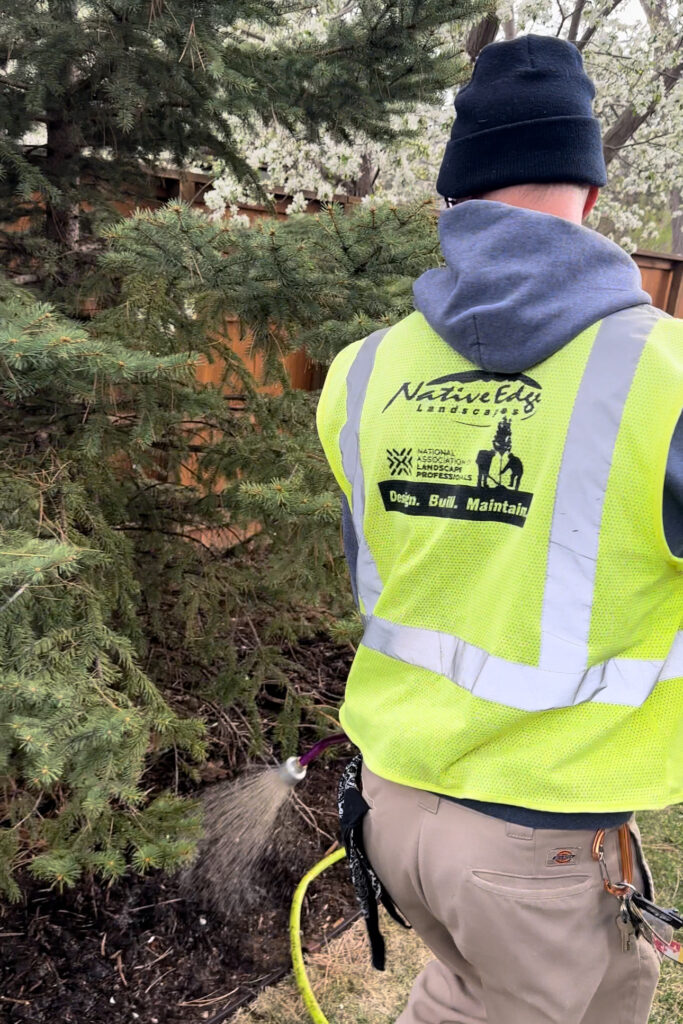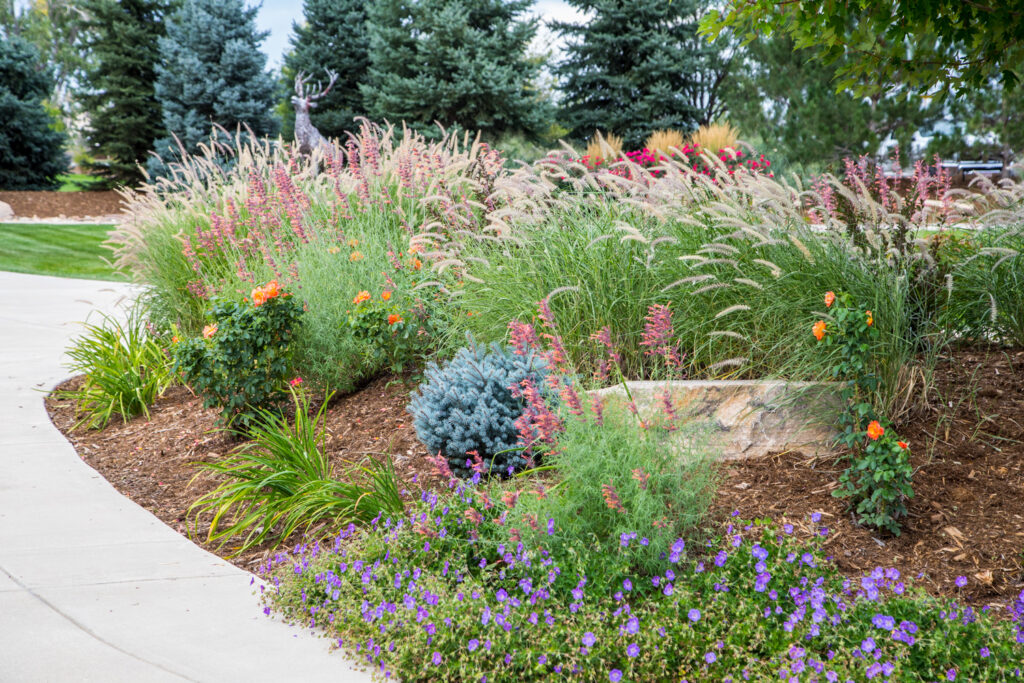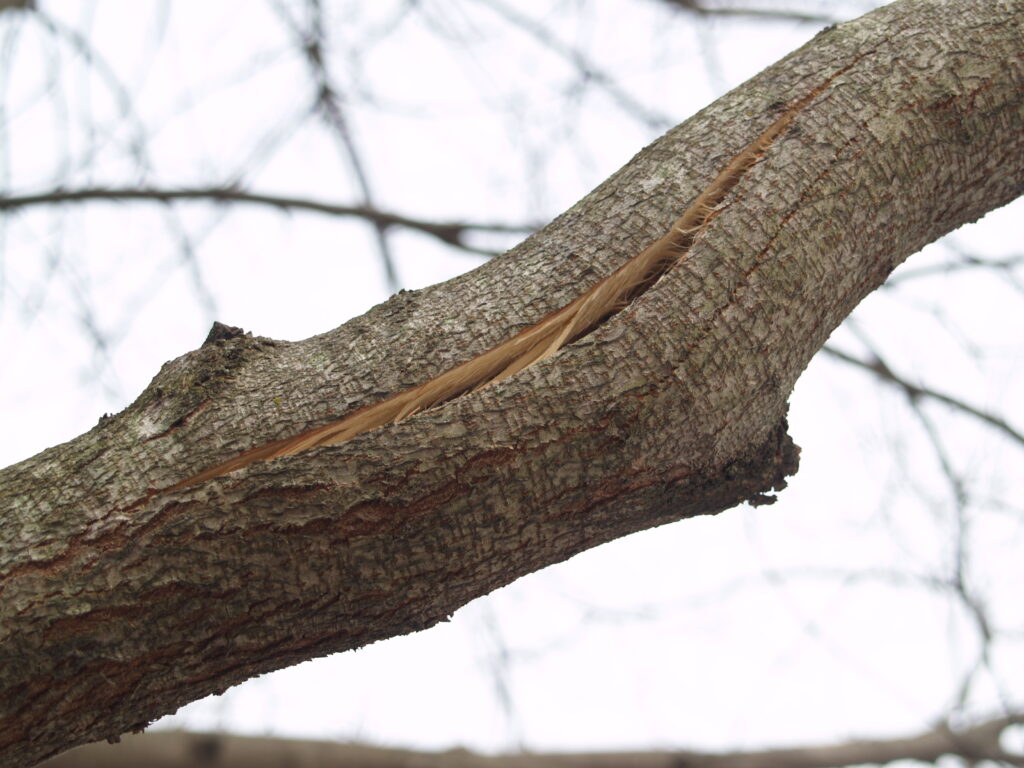Protecting Your Landscape From High Winds

Strong gusty winds can shred leaves, tear off flowers, break branches, and uproot shrubs and trees leaving plants susceptible to further damage from insects and disease. Constant wind pulls moisture from foliage faster than roots can draw it from the soil causing leaves to wilt and brown around the edges. Here are three key to-do’s to help your landscape recover after a wind event in Colorado…
Feed Your Plants, Trees, and Soils with a Nutrient Rich Soil Drench

A microbial soil drench can help a landscape after a wind event by promoting soil health and enhancing plant resilience. These drenches typically contain beneficial microbes that can improve soil structure, increase nutrient availability, and aid in plant growth. By introducing these microbes into the soil, they can help plants recover from the stress of a wind event more quickly, strengthen their root systems, and improve overall vitality. Additionally, these beneficial microbes can outcompete harmful pathogens, potentially reducing disease pressure in the landscape.
Ensure Your Plants and Soils are Properly Protected with Mulch
Adding mulch back into your landscape after a wind event is important for several reasons. Mulch helps to retain soil moisture, regulate soil temperature, suppress weed growth, and prevent soil erosion. After a wind event, the soil may have been disturbed, exposing plant roots and making them more vulnerable to drying out. By adding mulch, you can help conserve moisture in the soil, which is especially important during the recovery period when plants may be stressed.

Mulch also acts as a protective barrier, shielding the soil from the impact of raindrops, which can lead to soil compaction and erosion. It can help stabilize the soil and prevent further damage caused by water runoff. Additionally, mulch provides a layer of insulation that helps regulate soil temperature, creating a more stable environment for plant roots to recover and thrive.
Overall, adding mulch back into your landscape after a wind event can aid in the recovery of plants, promote soil health, and protect your landscape from further damage.
Inspect Your Trees
- Be aware that the tree’s age will likely impact how it weathered the wind and that not all issues are easily visible. While young trees typically do not sustain serious damage, mature deciduous trees not only can be seriously damaged but have problems that aren’t obvious to an untrained eye.
- Be wary of cracks and splits in the limbs. Broken limbs pose grave threats to people and property. Often, split limbs may be hanging on by a thread, so to speak, and these “hangers,” may not be so readily noticed. A little more wind or late spring snow can send them crashing.
- Look more closely for hangers if there has been some obvious damage to a tree. Cracked limbs can be more difficult to see. One tell-tale sign that a limb is cracked is that it is bending down and/or resting on a limb below.

What to do with cracked branches:
- Most cracked branches continue to live. In spite of the cracks, nutrients will still move through the branch to keep offshoot branches and leaves alive. The tree will try to callous over the wound to “heal,” but the bark will not grow back together, and the limb will remain a hazard.
- If you have large deciduous trees or think you have trees with cracked branches, consider having them inspected by an arborist or landscape professional. Play it safe and remove wind-damaged limbs before they become a liability.
What to do with split trunks or large branches:
- High winds can also cause tree trunks or branches to split vertically or even uproot the tree. As with broken limbs, splits can be hazardous and need to be dealt with right away.
- Simply sawing off a limb behind the break won’t be aesthetically pleasing or healthy for the tree. It’s critical to call in a qualified arborist or maintenance professional to remove broken limbs so that they are cut properly for the long-term health of the tree.
To get more advice from a Native Edge professional, Get In Touch below!
Get In Touch
To schedule a consultation or request services please call 303-245-9166, send an email to information@nativeedgelandscapes.com or Get In Touch through our website. One of our Customer Care Representatives will be happy to help.
